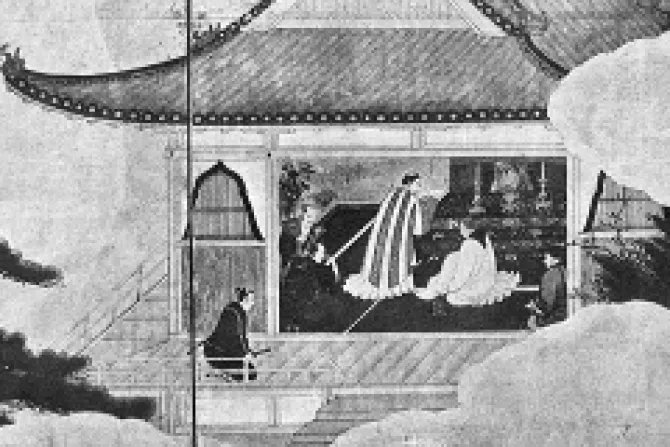Vatican City, Feb 5, 2014 / 04:07 am
Takayama Ukon, a 16th-century samurai who faced exile rather than giving up his Catholic faith, is being considered for sainthood because of his fidelity to Christ and his Church.
The Japanese bishops' conference submitted a 400-page application for Takayama's beatification to the Congregation for the Causes of Saints last year.
Takayama's life is an example of "a great fidelity to the Christian vocation, persevering despite all difficulties," Fr. Anton Witwer, general postulator of the Society of Jesus, told CNA Jan. 30.
Takayama was born in 1552, three years after the Jesuit missionary St. Francis Xavier introduced Christianity to Japan. When he was 12, his father became Catholic, and Ukon was baptized as Justo by the Jesuit Fr. Gaspare di Lella.
The Takayama were daimyo: members of the class of ruling feudal lords who ranked second to the shogun in medieval and early modern Japan. Daimyo held vast estates and were entitled to raise armies and hire samurai.
Given their respected position, the Takayama were able to support missionary activities in Japan, serving as protectors of Japanese Christians and of the Jesuit missionaries. According to Fr. Witwer, who also chairs the Ignatian Institute for Spirituality at the Pontifical Gregorian University, they influenced the conversion of tens of thousands of Japanese.
In 1587, when Takayama was 35, Japan's chancellor, Toyotomi Hideyoshi, began a persecution of Christians, expelling missionaries and encouraging Japanese Catholics to forsake their faith.
While many daimyo chose to leave the Catholic faith, Takayama and his father chose instead to forsake their estates and honors to maintain the faith.
Fr. Witwer recounted that Takayama "did not want to fight against other Christians, and this led him to live a poor life, because when a samurai does not obey his 'chief,' he loses everything he has."
Takayama "chose poverty to be faithful to the Christian life. During subsequent years, he lived under the protection of aristocratic friends, and was able to live a more dignified life."
"Many people tried to convince Takayama to abjure his faith," Fr. Witwer explained, "because he was a noble, and a known person, and because they did not want to kill a Japanese; the persecutors founded easier killing Christian foreigners, while it was difficult to kill Japanese Christians."
In 1597, Toyotomi ordered the execution of 26 Catholics, both foreigners and native Japanese; they were crucified Feb. 5.
Despite the threat of such a fate, Takayama refused to leave the Church, choosing to live a Christian until his death. When the shogun Tokugawa Ieyasu definitively banned Christianity in 1614, Takayama went into exile.
He led a group of 300 Catholics to the Philippines, where they settled in Manila. Arriving in December, he died Feb. 4, having been weakened by persecution in Japan.
"Since Takayama died in exile because of the weakness caused by the maltreatments he suffered in his homeland," Fr. Witwer explained, "the process for beatification is that of a martyr."
If Takayama is accepted as a martyr, he will not need a miracle before being beatified.
The current efforts to canonize Takayama are the third such attempt, following one shortly after his death, and one in the 1960s.


